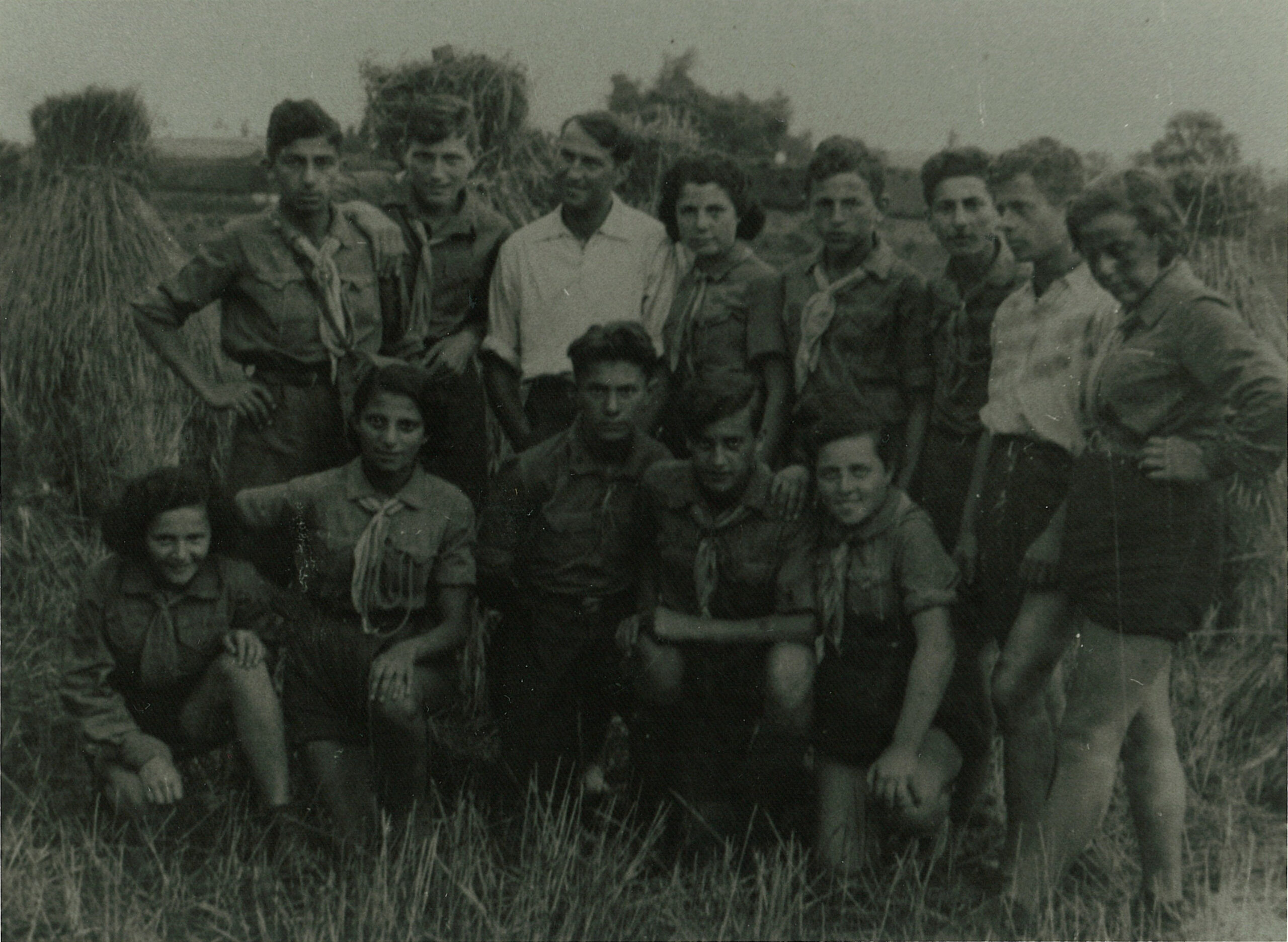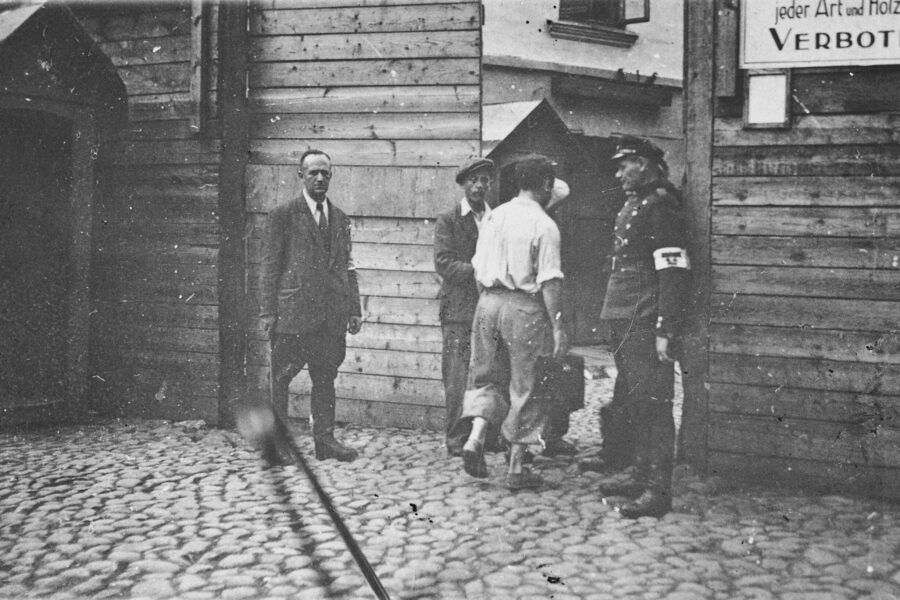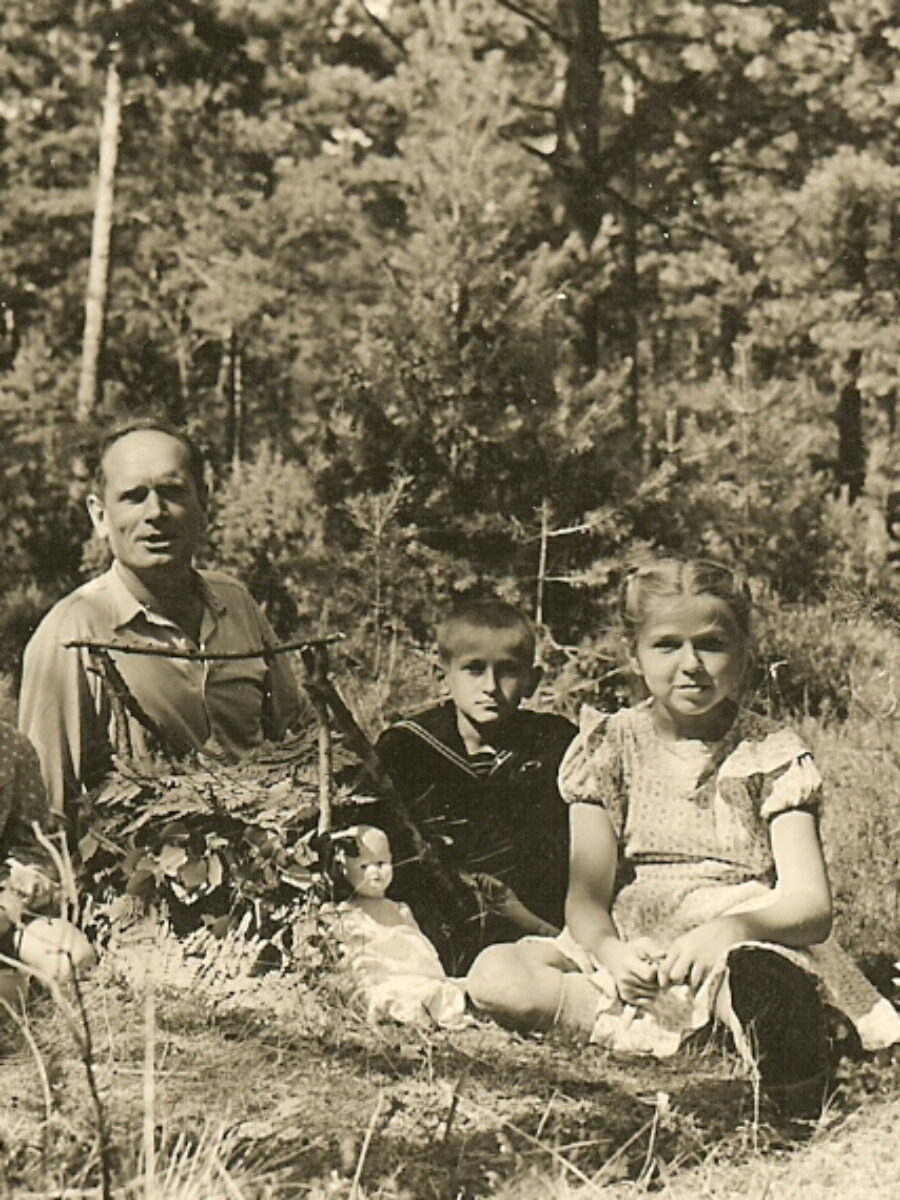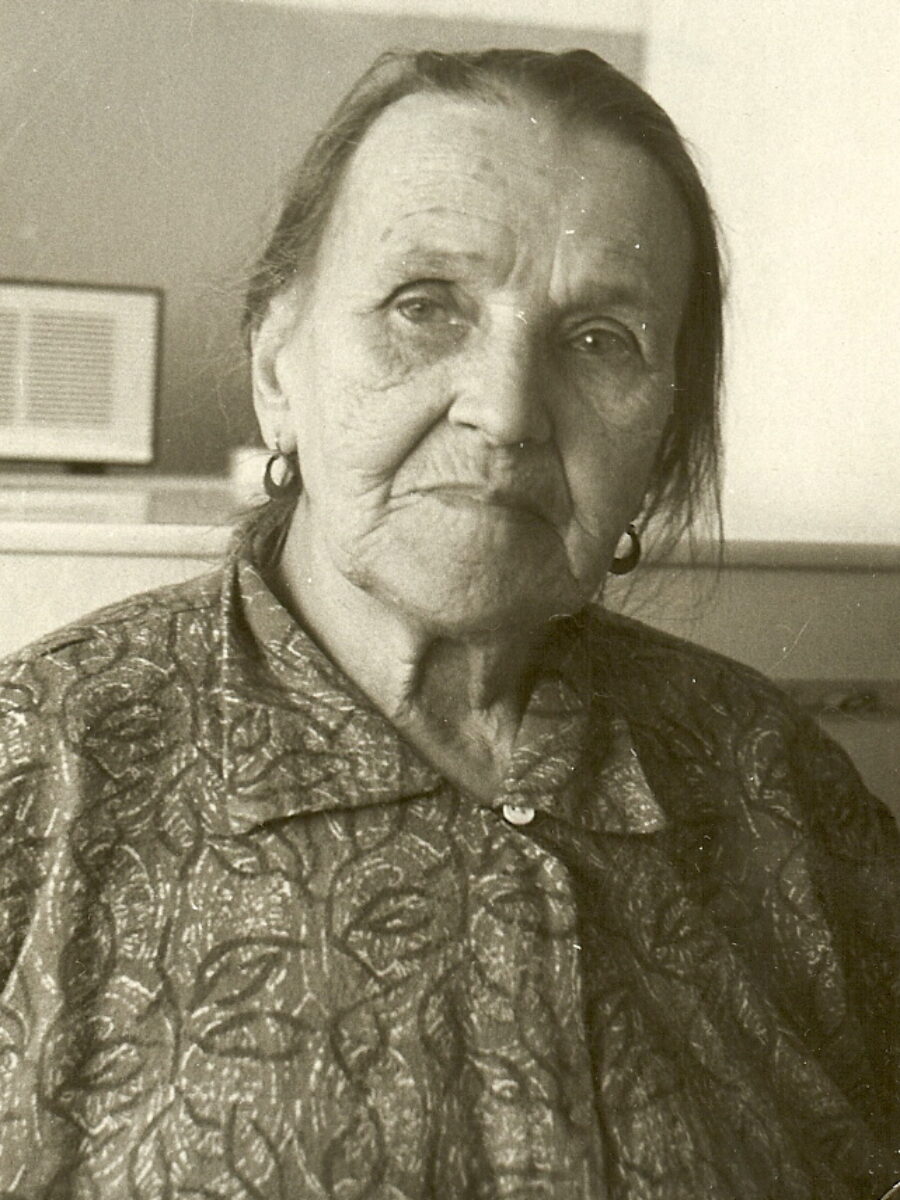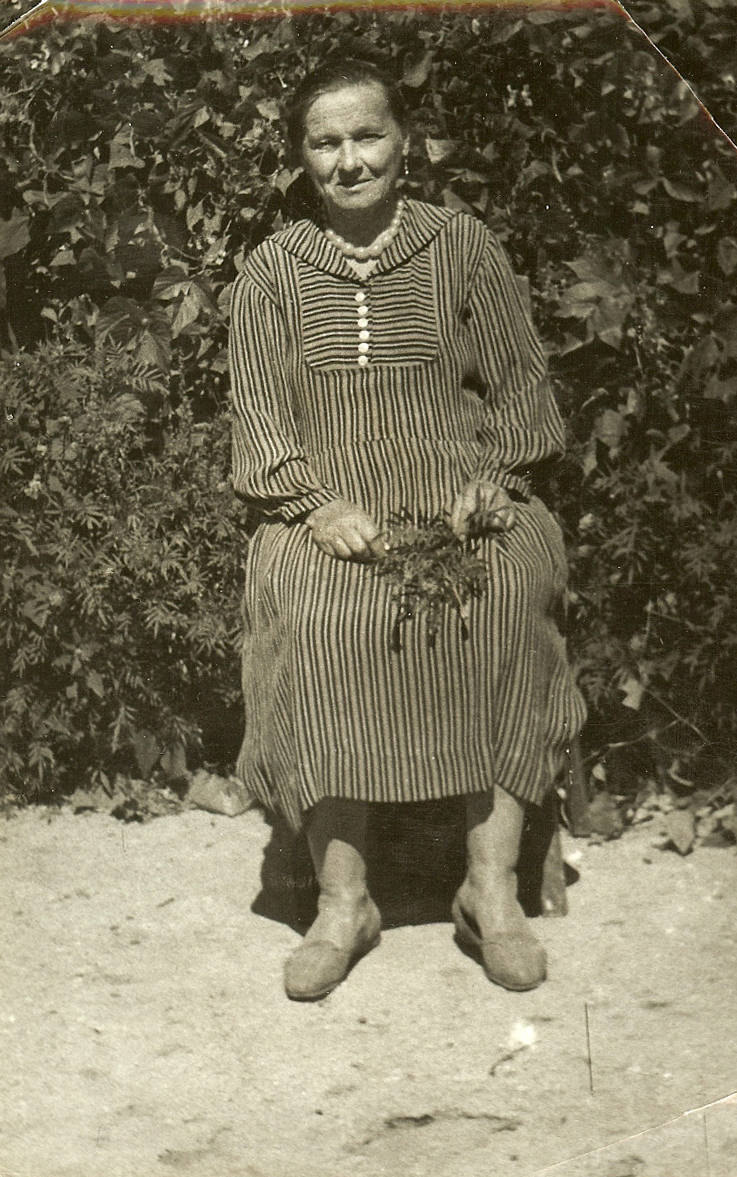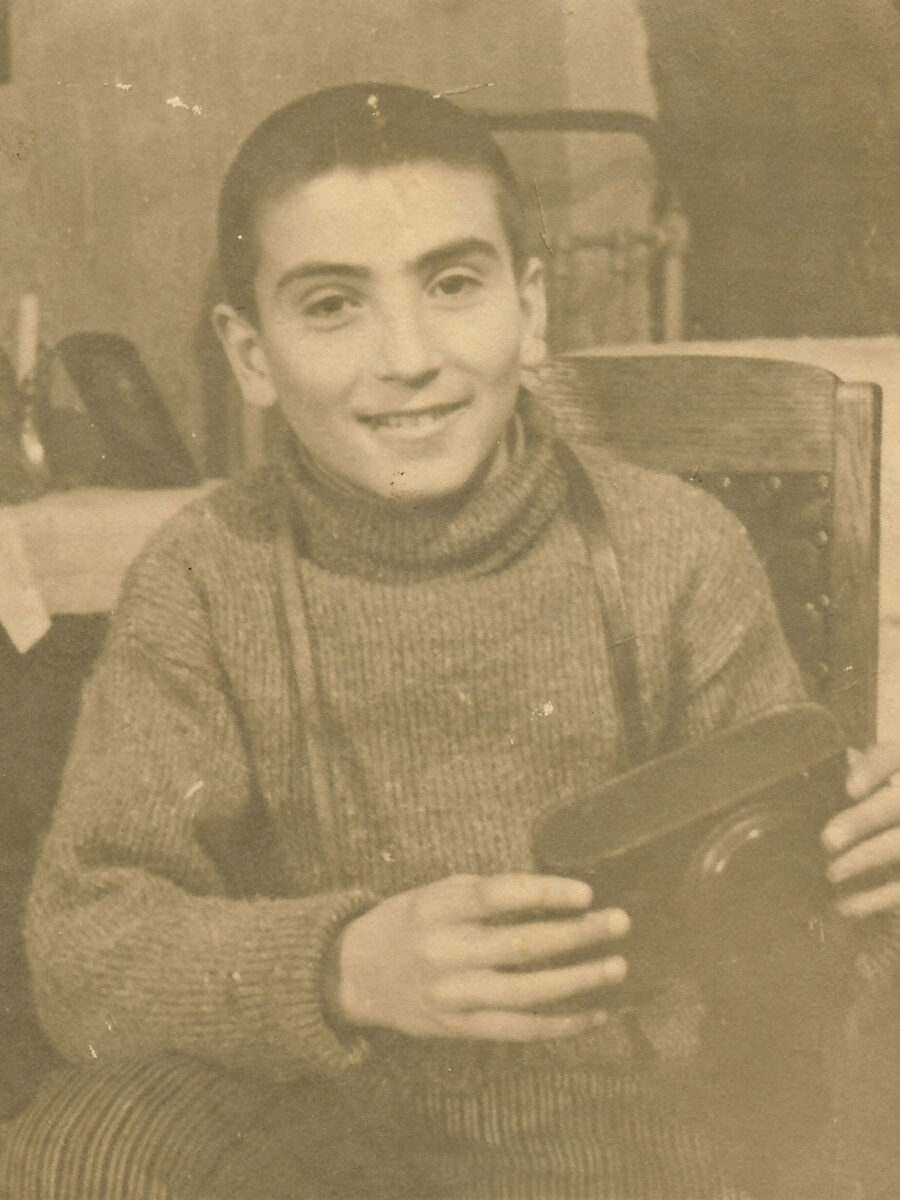USHMM: courtesy of Vitka Kempner Kovner.
Most Jewish leaders and ghetto residents considered armed rebellion suicide.
But as deportations and rumors of death camps increased, some realized their choice was not whether to die, but how to die.
Young Zionists and Jewish Socialists in Warsaw, angered by their own inaction when 265,000 Jews were deported to Treblinka in summer 1942, urged armed resistance. They formed the Jewish Fighting Organization and, with smuggled weaponry and handmade arms, prepared for an uprising should the Germans attempt to deport the 55,000 remaining Jews in the ghetto. When German troops entered in January 1943, fighters attacked. German forces withdrew, halting deportations for a time. This resistance culminated in a month-long revolt in April and May 1943. These Jewish fighters withstood the German army longer than any conquered European country.
The Warsaw ghetto uprising inspired underground movements in more than 90 ghettos and armed revolts in other ghettos including Bedzin, Bialystok, Czestochowa, Lachwa, and Tyczyn, and the citywide Warsaw uprising in August 1944.
Vilna: Resist with your Last Breath
At the time of the German occupation on June 24, 1941, there were 60,000–70,000 Jews living in Vilna.
Soon after, German forces and Lithuanian auxiliaries began killing the Jewish population in the Ponar forest. By the end of 1941, only 20,000 Jews remained.
In response, Abba Kovner, a 23-year-old Zionist, declared on January 1, 1942:
Jewish youth…. Hitler plans to destroy all the Jews of Europe…. We will not be led like sheep to the slaughter! … It is better to die fighting like free men than to live at the mercy of the murderers. Resist with your last breath!
However, the Jewish Council and many ghetto residents still believed that deportation meant work and could spare those who remained.
In late September 1943, liquidation of the ghetto began. The underground revolted without support from other ghetto inhabitants.
Kovner and a few hundred others survived and fled to the forest to continue the fight.

IHMEC: courtesy of the family of Renny Greenblatt Kurshenbaum.
Couriers maintained contact between ghettos and resistance groups in the forests, preparing the way for resistance fighters and other ghetto inhabitants to escape.
From the beginning of the War, Zionist youth organizations sent out couriers–mostly young women, some as young as fifteen–to serve as a lifeline to Jewish communities throughout Europe. Passing as non-Jews, they transported information, mail, documents, forged identity papers, underground newspapers, money, and eventually ammunition and weapons into the ghettos.
Couriers maintained contact between ghettos and resistance groups in the forest, preparing the way for resistance fighters and other ghetto inhabitants to escape.
The mass murder of European Jewry ultimately became known within the ghettos through information gained by the couriers. Couriers also warned communities where slaughter had not yet occurred, so they could possibly mount armed resistance.
What we are doing is the only way to survive; we have no right to give up living, we must avenge ourselves.
In late June 1943, the last prisoners of the Belzec death camp arrived in Sobibor to be gassed.
Notes found in their clothing warned: “Death awaits you, too.” The Sobibor prisoners realized they had to act.
The underground movement in the camp had yet to successfully revolt. On September 23, 1943, a deportation from Minsk brought a trained Soviet Jewish officer, Aleksandr Pechersky, to the camp.
In the late afternoon of October 14, 1943, fighters led by Pechersky killed most of the SS guards. Prisoners broke through the gate and ran across the surrounding minefield. By dusk, about 300 prisoners had escaped. Nearly 200 of them managed to avoid recapture.
The Germans destroyed the camp and planted crops to cover all traces of Sobibor where, between March 1942 and October 1943, the Nazis murdered more than 170,000 Jews.
Against all odds, Jewish prisoners revolted in three of the six killing centers.
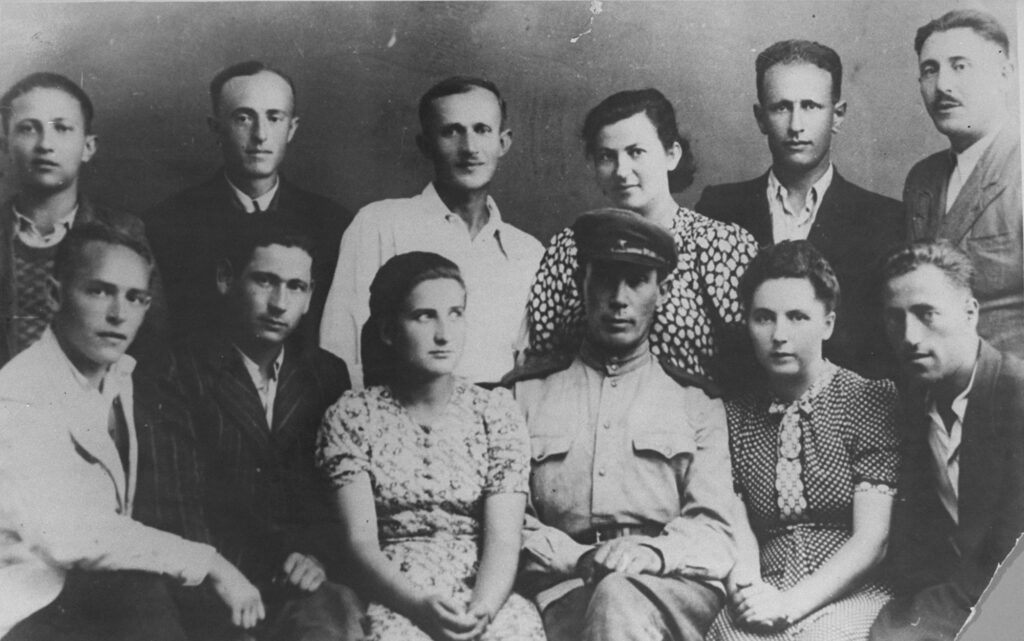
USHMM: Courtesy of Misha Lev.

IHMEC: courtesy of Valentina Parkhomov.
Rescuers
A small number of non-Jewish individuals risked their lives to help.
In the German-occupied Soviet territories, Jews received no organized assistance from any specific local group or anti-German underground movement. A small number of non-Jewish individuals risked their lives to help. They provided safe shelter for various lengths of time, sometimes for a day, sometimes for a year or more. Occasionally aid took the form of supplying fake documents. Rescue also required a supply of food—especially difficult under conditions of severe shortage. Sometimes Jews contributed to the cost of food, but often the entire burden fell to the rescuer. In Estonia, Latvia, and Lithuania, it was especially hard to help Jews because of the extensive collaboration of the local population with the Germans. Nonetheless, there were people who stepped forward to help.
As of 2022, Yad Vashem has awarded the title “Righteous Among the Nations” to non-Jewish individuals from German-occupied Soviet territories in Armenia (24); Belarus (676); Estonia (3); Latvia (138); Lithuania (918); Moldova (79); Russia (215); and Ukraine (2,673). The relatively large number of Ukrainian rescuers is a result of the high concentration of Jews in Ukraine.
These rescuers represent a small number of people when compared with the total population of the occupied Soviet territories at that time–between 60 and 70 million.

